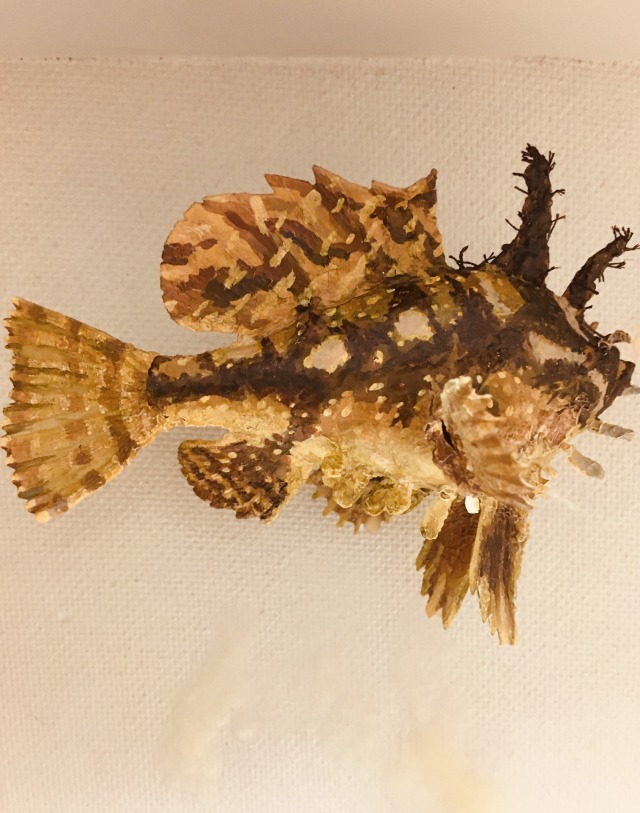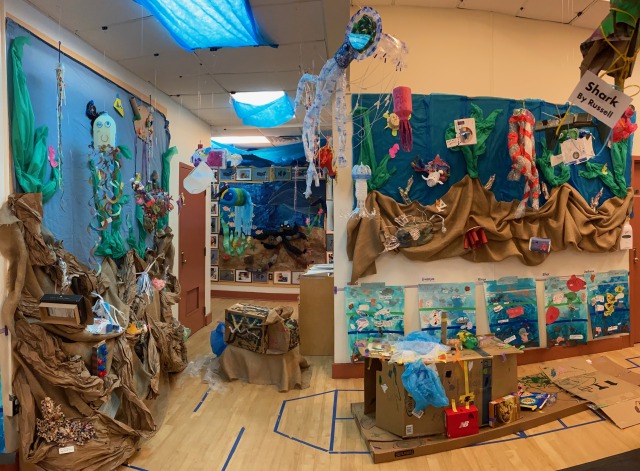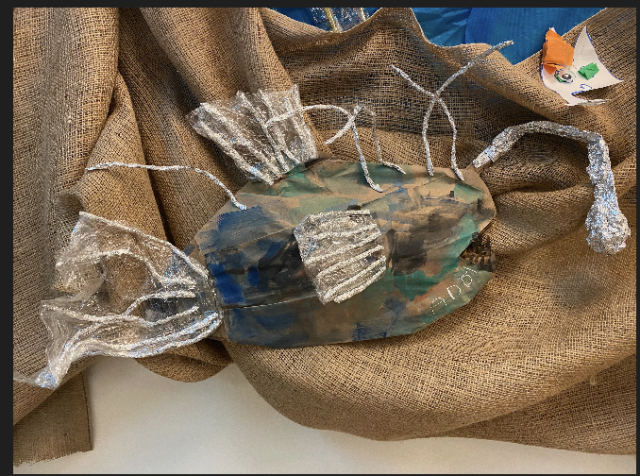by Patrick McShea

During the late winter, students and faculty at Carnegie Mellon University’s Children’s School learned about the ocean all day, every day. A five-week study of a broad topic is an annual tradition at the school, which serves pre-school and kindergarten-aged children, and operates within the university’s Psychology Department to support developmental research and the training of educators.
Coordination of the ocean lesson plan was the responsibility of Donna Perovich, a kindergarten teacher at the Children’s School for the past 24 years who has worked as an overall support educator since the advent of the COVID-19 pandemic. I learned of her efforts during the project’s planning stages when she asked to borrow ocean-related materials from the museum’s Educator Loan Collection.
Materials for Ocean Lessons from the Educator Loan Collection
The museum’s longest running outreach program is operating with a significant borrowing limitations during the pandemic: materials that cannot be cleaned, or would be damaged by repeated cleaning, are not currently available for loan. In Donna’s case the restriction meant she was able to borrow encased taxidermy mounts of several saltwater fish, plastic scale models of six different whale species, and a sea turtle shell, but not touchable examples of sea stars, sponges, sea fans, and delicate corals.
“I have a lot of seashells.” Donna explains, “Over the years I’ve been blessed with boxes of them. So, we had plenty of material for the students to touch and closely examine.” Among the museum materials she found particularly useful were the whale models. “We did a big whale measuring activity, measuring and pacing-off the lengths of different whales in the halls. Everyone developed a good sense of the size difference between species like a great blue whale and a pilot whale.”
Classroom Aquariums
Setting up and maintaining aquariums in the school’s four classrooms was among Donna’s early Ocean project tasks. The tanks featured freshwater species, two classrooms had single Betta fish, and the other two classrooms had larger tanks with mollies, tetras, and barbs. Observations of the live fish were vitally important for learning more about the movements and behavior of ocean fish. In the case of several three-year-olds, such observations also influenced their initial expectations of fish taxidermy mounts from the museum. “The aquariums had been in the classrooms for awhile before the museum materials appeared,” explains Donna, “and some of the youngest students thought the loan boxes with the fish were another aquarium.”

Lest you think the confusion diminishes Donna’s respect for the thinking power of the children she works with, she brings up the enormous three-dimensional mural the students created to convey much of what they learned. “We had wonderful conversations where the children would be talking about things like deep ocean trenches and how reduced sunlight impacted the creatures living there. In some ways I think their brains are better able to absorb new information than our cluttered brains.”

Whole school study units at the Children’s School conclude with a family festival. Although the school has operated in-person with reduced capacity this year, the Ocean Family Festival was a Zoom event. The camera feeds of several event sessions focused on child-created details in the amazing mural.
Patrick McShea works in the Education and Visitor Experience department of Carnegie Museum of Natural History. Museum employees are encouraged to blog about their unique experiences and knowledge gained from working at the museum.
Related Content
Carnegie Museum of Natural History Blog Citation Information
Blog author: McShea, PatrickPublication date: April 6, 2021
